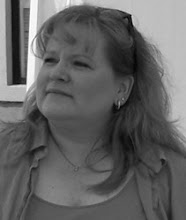House's protection may hinge on guilty plea 100 years ago
Lawyer makes case against landmark
By Marcia
Amesmames@patuxent.comPosted 7/16/08
The fate of Victor Bloede's Catonsville home may depend on his rap sheet, not his achievements as a chemist, inventor and entrepreneur.
Wanting to preserve the 83-year-old, vacant house at 110 Forest Ave. that Bloede built and occupied until his death in 1937, neighbor Steve Lackey nominated it for county landmark status last year.
The house qualifies based on its association with a historically significant person, according to Lackey and the county Landmarks Preservation Committee, which approved the nomination in January.
From Towson attorney Scott Barhight's point of view, however, Bloede's guilty plea in 1908 to charges of conspiring to defraud the U.S. government should trump the nomination.
Barhight represented developer Charles Skirven in a July 7 hearing before the County Council, which has final authority to designate county landmarks.
The County Council has 90 days from the July 7 hearing to decide whether to approve the landmark nomination.
Barhight described the 1908 case as one argument against preserving the house, he told the Catonsville Times.
Furthermore, a final ruling that preserves the house would cause Skirven to drop his 23-unit, county-approved plan to raze it and build The Villas at Eden Terrace at 110 Forest Ave., Barhight said.
Skirven, who has described the house as "a shambles," has a contract to buy the 6.5-acre property from its current owner, Lino LaPenna, who lives out of state.
His plan for The Villas at Eden Terrace was approved last fall under the county's Planned Unit Development review process.
In May this year, the plan received the zoning relief needed for construction to proceed on the development, which would be marketed to people age 55 and older.
With the Bloede house a county landmark, however, Skirven would need county Landmark Preservation Commission approval to demolish it or change its exterior architecture.
"Fat chance of that happening," Barhight said, referring to approval for demolition.
Lackey describes Barhight's account of the 1908 conspiracy case as "misleading."
"Personally, I found Mr. Skirven's lawyer, with his affront to Victor Bloede, to be remarkably offensive," he said.
Although Bloede was technically guilty of violating the law, he had not intended to defraud the government, according to a 1908 Washington Post article.
Lackey also defends Bloede's historical significance.
In addition to his namesake dam on the Patapsco River in Catonsville, which housed an electrical generator thought to be the first of its kind, Bloede is credited with developing Eden Terrace, the neighborhood that includes Forest Avenue, Lackey noted.
Bloede invented and patented the first adhesive used on postage stamps.
He also collaborated with a U.S. Department of Treasury chemist to develop an ink used by the department in steel engraving.
It was in the development of the ink that he ran afoul of the law.
Lackey, who has researched the issue with a Bloede family member, alleges that Bloede had the U.S. Department of Treasury's blessing in the late 1890s to collaborate with a department chemist to develop ink the department needed for steel plate engraving.
Bloede subsequently sold the ink under annual, competitive contracts to the department for more than 20 years.
Beginning in 1901, he agreed to share royalties from the sales with the department chemist who had helped him develop the ink.
The agreement was approved by the Secretary of the Treasury, according to Lackey and the Bloede family.
In 1908, Bloede and the department chemist both were indicted by a federal grand jury for conspiracy to defraud the U.S. government, according to the Washington Post.
Acting on bad advice from a friend who was a Baltimore judge at the time, Bloede pleaded guilty and paid a fine, according to Lackey.
Barhight's attempt to discredit Bloede was "pathetic," Lackey said.
"If this is the best they can come up with, Mr. Skirven is not getting his money's worth," he said.



